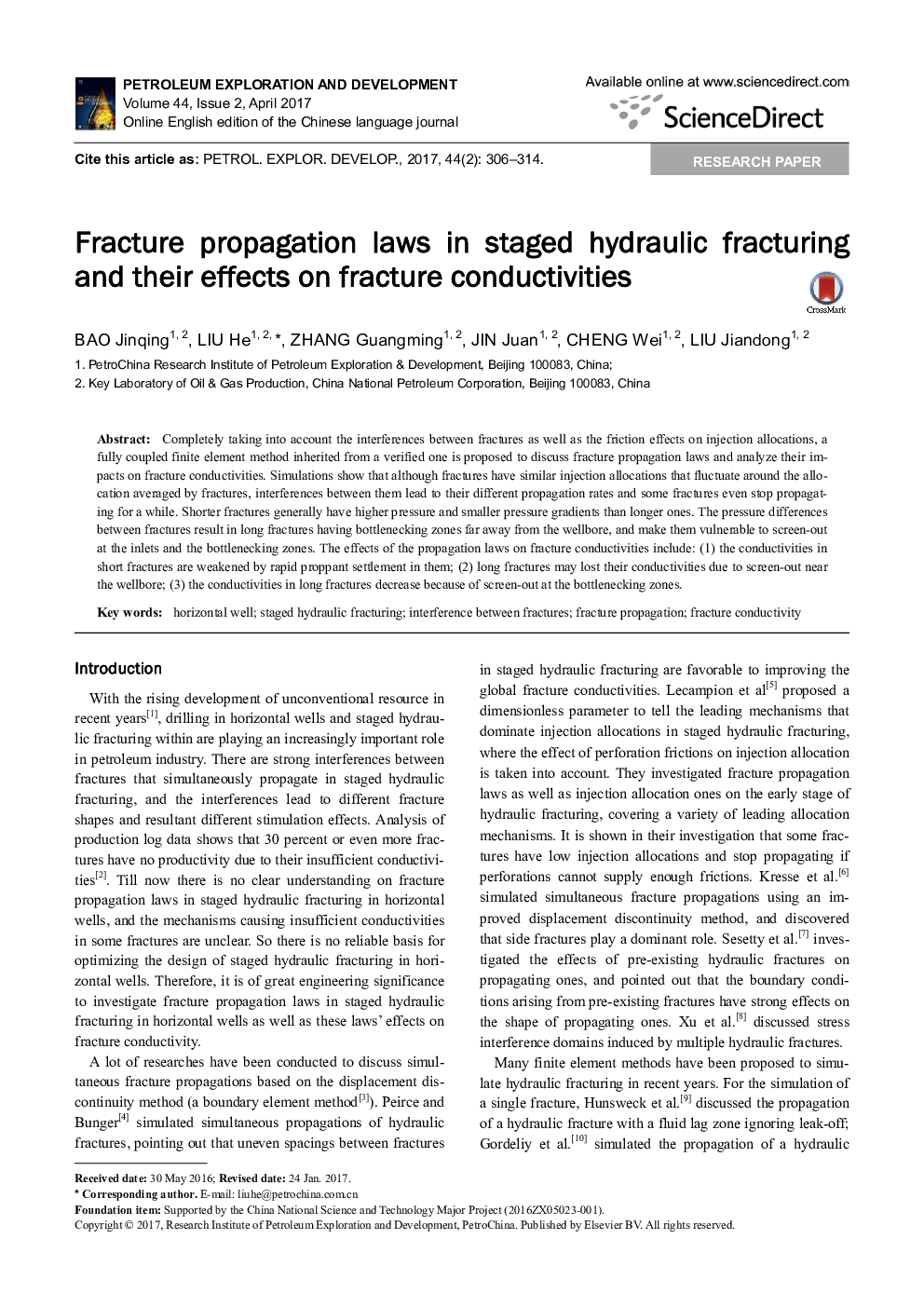| Article ID | Journal | Published Year | Pages | File Type |
|---|---|---|---|---|
| 8912281 | Petroleum Exploration and Development | 2017 | 9 Pages |
Abstract
Completely taking into account the interferences between fractures as well as the friction effects on injection allocations, a fully coupled finite element method inherited from a verified one is proposed to discuss fracture propagation laws and analyze their impacts on fracture conductivities. Simulations show that although fractures have similar injection allocations that fluctuate around the allocation averaged by fractures, interferences between them lead to their different propagation rates and some fractures even stop propagating for a while. Shorter fractures generally have higher pressure and smaller pressure gradients than longer ones. The pressure differences between fractures result in long fractures having bottlenecking zones far away from the wellbore, and make them vulnerable to screen-out at the inlets and the bottlenecking zones. The effects of the propagation laws on fracture conductivities include: (1) the conductivities in short fractures are weakened by rapid proppant settlement in them; (2) long fractures may lost their conductivities due to screen-out near the wellbore; (3) the conductivities in long fractures decrease because of screen-out at the bottlenecking zones.
Related Topics
Physical Sciences and Engineering
Earth and Planetary Sciences
Geochemistry and Petrology
Authors
Jinqing BAO, He LIU, Guangming ZHANG, Juan JIN, Wei CHENG, Jiandong LIU,
